Organizing exhibitions is one of the most professional ways to boost brand recognition, engage with the target audience, and achieve important marketing goals. Whether you’re planning a trade, cultural, or art exhibition, the preparation process requires a well-thought-out plan and carefully considered steps to ensure success. If you’re interested in learning how to organize an exhibition professionally, maximizing resource utilization and attracting your audience effectively, this article provides you with a comprehensive guide to doing it without errors.

Basic Steps for how to organize an exhibition
Successfully managing exhibitions requires precise planning and flawless execution to achieve the desired objectives. Below, we explore how to organize an exhibition professionally, focusing on the essential steps that form the foundation for any successful event:
-
Pre-planning:
Planning is the starting point for everything. You need to define the main objective of the exhibition, whether it’s increasing sales, introducing a new product, or enhancing business relationships. It’s crucial to establish a comprehensive timeline, allocate tasks and responsibilities, and prepare a budget that covers all aspects, from booth designs to event management. -
Choosing the Right Venue:
Selecting the ideal location is a critical step. The venue should be suitable for the exhibition type, whether it’s a trade show or a cultural event. The space should be large enough to accommodate different booths equipped with modern technologies to captivate visitors. Don’t forget to consider accessibility and parking availability. -
Effective Promotion:
Marketing the exhibition plays a significant role in its success. Use effective marketing strategies including online ads, email campaigns, and social media. Also, create engaging visual content that highlights booth designs and encourages visitors to participate. -
Designing and Setting Up Booths:
Innovative booth designs add a professional touch to the exhibition. Booths should align with the brand identity and attract visitors directly. Remember to design spaces that allow comfortable product displays and interactions with customers. -
Managing Events and Activities:
During the exhibition, you’ll need to manage the events and activities professionally. Well-organized events help keep visitors engaged throughout the event. Plan interactive activities and workshops that highlight the benefits of the products or services on display. -
Logistical Support:
Ensure all logistical services are in place, such as lighting, sound systems, and rest areas. These small details significantly enhance the experience for both visitors and participants. -
Post-event Evaluation:
After the exhibition, gather feedback from participants and visitors. Use this data to improve future event planning and ensure continued success.
By following these steps, you’ll be able to understand how to organize an exhibition effectively. Professional designs, such as trade show booths, and meticulous management of each step will guarantee the desired results.
How to Organize an Error-Free Exhibition
Organizing a successful exhibition without mistakes requires attention to detail and proper preparation for all possibilities. In this section, we explain how to organize an exhibition free of errors that could impact its success.
-
Pre-planning All Details:
Planning is the first and most essential step to guarantee the event runs smoothly. A clear timeline should include all activities, from designing booths to organizing event sessions. -
Choosing the Right Suppliers:
One common mistake in exhibition planning is relying on unreliable suppliers. Ensure you work with experienced companies specializing in trade show booth design and logistical services. Trusted partners minimize the chances of problems during the event. -
Creating an Emergency Plan:
Not everything will go according to plan, so having a contingency plan for emergencies like power outages or delayed equipment delivery is crucial. This ensures smooth event management even under challenging circumstances. -
Continuous Communication with the Team and Participants:
Communication is key to ensuring things run smoothly. Assign tasks clearly to each team member and monitor progress regularly. Additionally, keep participants updated on any changes related to the exhibition. -
Attractive Booth Designs:
Booths should reflect the participating brands’ identity and be designed creatively to attract visitors and encourage interaction. -
Selecting the Right Location:
The location plays a major role in the success of the exhibition. Choose a venue that’s easy to access and offers enough space to accommodate conferences and activities, ensuring a comfortable experience for all.
By following these tips, you can minimize mistakes that could affect the event’s success. Focusing on the details and being prepared for any emergency will help you achieve your goals and create a positive impression.
Why Are Exhibitions Important?
Exhibitions are among the most powerful marketing tools that provide companies and individuals with numerous benefits that cannot be achieved by other means. Professionally organized exhibitions help boost brand identity, foster relationships, and achieve long-term strategic goals. Therefore, knowing how to organize an exhibition is crucial for any company aiming to stand out in a competitive market.
-
Direct Interaction with Customers:
One of the most significant advantages of exhibitions is the opportunity for direct interaction between exhibitors and the audience. This type of engagement helps build trust and a better understanding of customer needs, making the visitor experience more personalized and memorable. -
Promoting Products and Services:
Exhibitions are the perfect opportunity to showcase new products and services. Eye-catching booth designs help highlight the items on display, attracting visitors’ attention. Innovative booth ideas can also enhance the visitor experience and draw more interest. -
Expanding Networks:
Exhibitions offer great opportunities to network with other companies, potential clients, and even media outlets. Building relationships during exhibitions strengthens future collaboration and partnership opportunities. Professional event management and execution highlight the importance of networking and achieving business goals. -
Boosting Brand Identity:
Companies that participate in exhibitions can elevate their market position by showcasing their identity through professionally designed trade booths. Continuous participation in exhibitions demonstrates professionalism and commitment to customers. -
Increasing Sales and Profit:
Exhibitions aren’t just about promoting products—they’re also great opportunities for direct sales. Visitors are often ready to make purchases at the exhibition, which generates immediate return on investment. -
Sharing Knowledge and Learning:
Exhibitions provide opportunities for knowledge exchange and new ideas. Organizing conferences and events within the exhibition adds educational value, enriching the participants’ experience.
In conclusion, understanding how to organize an exhibition ensures you make the most out of these opportunities. Whether you’re looking to market your products, expand your network, or boost profits, exhibitions remain an ideal way to reach your goals effectively.
Exhibition Performance Evaluation
Evaluating performance after the exhibition is a crucial step to ensure future improvements and achieving set objectives. The evaluation process helps determine whether the exhibition met its goals, such as increasing brand awareness, attracting the right audience, or achieving direct sales. Understanding how to organize an exhibition isn’t complete without knowing how to measure success and analyze results accurately.
-
Collecting Feedback from Participants and Visitors:
It’s essential to distribute surveys to visitors and participants to gather their feedback about their experience at the exhibition. Ask about their impressions of booth designs, the quality of organization, and the variety of activities. This feedback helps identify strengths and areas for improvement. -
Analyzing Quantitative Data:
Measuring success requires analyzing numbers. Gather data on visitor numbers, the number of business deals made, and the level of interaction with booth ideas. These figures provide a clear insight into the exhibition’s actual performance. -
Reviewing Goal Achievement:
Compare the initial goals you set with the results achieved. For example, if you organized the exhibition to promote a new product, assess how successful the booth design was in showcasing this product and attracting attention. -
Evaluating the Team and Organizing Partners:
The team and partners play a key role in organizing events. Review their performance to ensure they provided the necessary support for the exhibition’s success. -
Planning for Future Improvements:
Based on the evaluation results, identify areas for improvement in future event planning. This will help you organize more successful and engaging exhibitions.
In short, performance evaluation completes the exhibition organization cycle and provides valuable insights for improving future events. If you’re looking to understand how to organize an exhibition effectively, evaluation is the final step that ensures continued success.
FAQs
-
-
How do you organize an event?
Organizing an event requires a comprehensive plan, starting with setting clear goals and selecting the right venue. A clear timeline should cover all activities, such as booth designs and event management. Continuous communication with the team and participants ensures smooth operations. -
What is event planning?
Event planning is creating a detailed plan that includes objectives, activities, schedule, and budget. It’s essential to define the required resources and choose an appropriate venue. Proper planning minimizes errors and ensures effective event management. -
How do you organize an exhibition?
Organizing an exhibition involves selecting a venue, designing suitable trade show booths, and creating a marketing plan to attract visitors. Managing events and activities throughout the exhibition, as well as providing a unique experience for visitors, is also essential. -
How do I get a business license for organizing exhibitions and conferences?
You can obtain a business license for organizing exhibitions and conferences through the Ministry of Commerce’s platform. Define your business activity, choose a suitable name, complete the application, and pay the required fees. -
How do you handle exhibitions?
Handling exhibitions requires good planning and organization. Focus on booth design, effective marketing, and professional event management. Communicating effectively with visitors and participants enhances the event’s success. -
What is the difference between a conference and an exhibition?
Conferences focus on knowledge exchange and idea-sharing, while exhibitions are about showcasing products and services and engaging with the audience. Both require careful planning and organization for success. Understanding the differences is crucial for organizing both types of events effectively.
-





